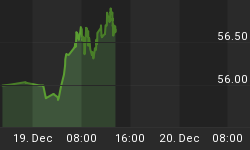When an electric utility suspends service for whatever reason, the local economy grinds to a halt. Schools close. Hospitals turn on the back-up generators. When this happens, people are suddenly and unwillingly thrust back into the pre-electricity era.
No one would dispute that California electric utility customers face a crisis. But because of the immediacy and widespread nature of the crisis, there is a tendency to reach for quick, partial remedies to what looks like a long-festering, intractable problem. The blackouts in Pacific Gas & Electric’s service demonstrates that case in point. A utility’s aging transmission network causes wildfires in areas that have become drier, more fire-prone and more densely populated in recent decades.
Operating in bankruptcy, due to wildfire liability exposure, the utility has chosen to minimize further wildfire risk from its transmission network by shutting off power to designated at-risk areas. The recent blackout affected 800,000 meters serving upwards of two million people. And in times like these all the old and easy to make complaints about the electric utility resurface: the executives are overpaid; maintenance was deferred, and the state PUC has been too lenient.
But the criticism we find most unfair is that this crisis of service is a direct consequence of PG&E being an investor-owned utility. In other words, whatever Pacific Gas & Electric’s corporate flaws, the source of its balance sheet capital—equity and publicly raised debt—is not responsible for its present difficulties. We would argue the problem lies not in the form of economic ownership but the very system of power generation and delivery itself. The bigger and more interconnected the system is, experts tell us, the more likely that when it goes down, it will go down in a big way. Reinforcing the existing system (i.e. burying lines) is not the solution.
The interesting question for us is: what’ happens after power is restored? What if these power interruptions become more frequent and of greater duration? Related: The Doodle Frenzy Is Earning Unethical Breeders Top Dollar
If we were designing an electric grid from scratch, one that is more resilient or less fragile we would simply install microgrids in fire-prone communities. That is, we would abandon the concept of supplying electricity from central station power carried by a lengthy network of transmission lines. The microgrid is a workable alternative that produces and stores all of its electrical needs independent of the grid. But the key here is “islanding”. That is, the microgrid can be designed to serve all customer requirements regardless of whether the old legacy utility is producing energy or not.
These things already exist. The difficulty is imagining how to get there from here and on a larger scale.
One place to begin is conceptual. Think about the local utility like any romantic relationship. There are unfortunate times when one has to break up. The utility, in this case, has “behaved” badly.
PG&E temporarily halted electric service to over two million people in the name of fire safety. If this continues to happen it will be economically crippling for affected areas. This could be bad but the key for us is that virtually everyone wants electricity and its benefits. No one really cares how it is produced or where it comes from.
We should add that we come at this not from a green new deal perspective. We believe that the present electricity production and delivery system, in addition to being environmentally harmful, is inadequate for the various climate challenges we face at present. Our electrical grid needs to be increasingly resilient, decentralized and anti-fragile. This will take time. Perhaps years. But Californians understand self-care. The key is making the fateful but often liberating decision to break up. In this case with the local utility.
by Leonard Hyman and William Tilles

















This used to be common practice and it helped minimize and even prevent fires.